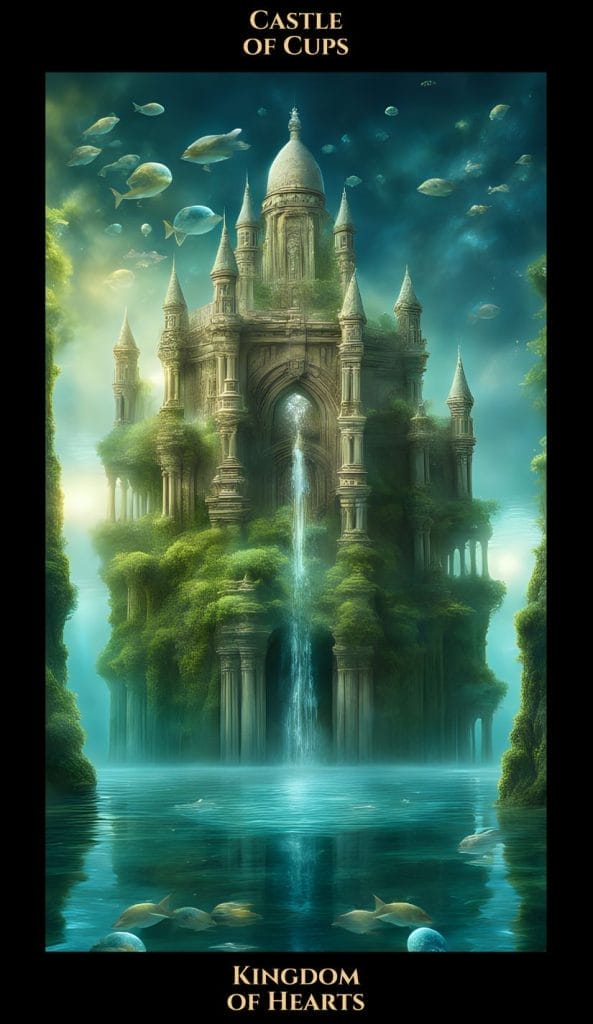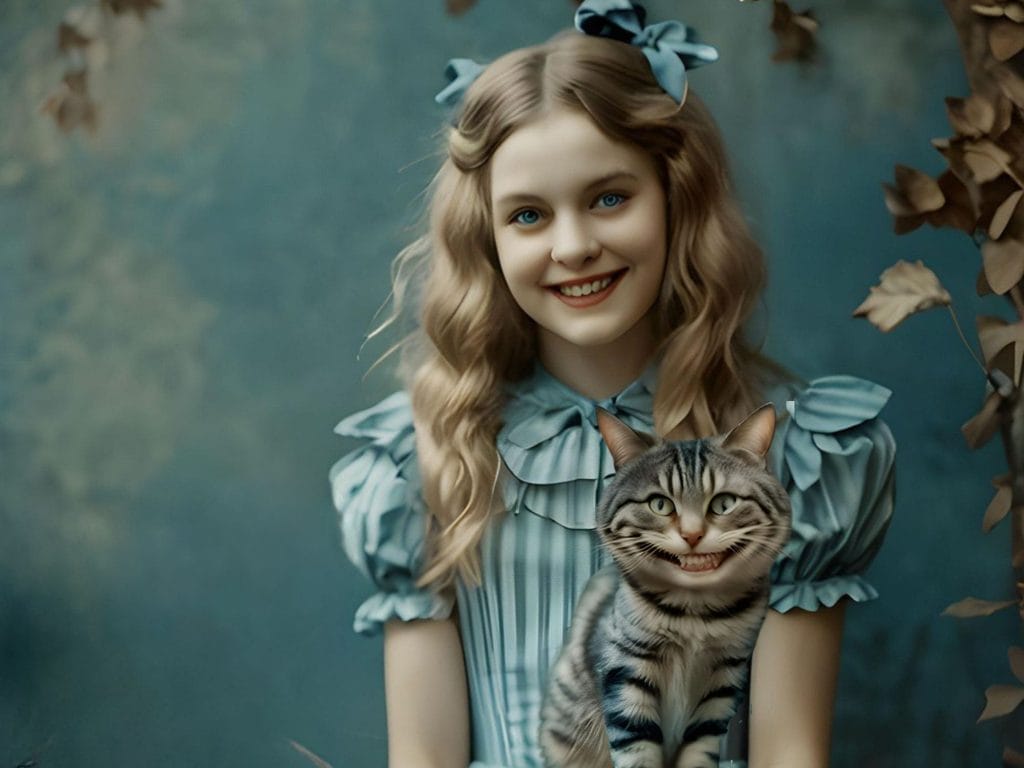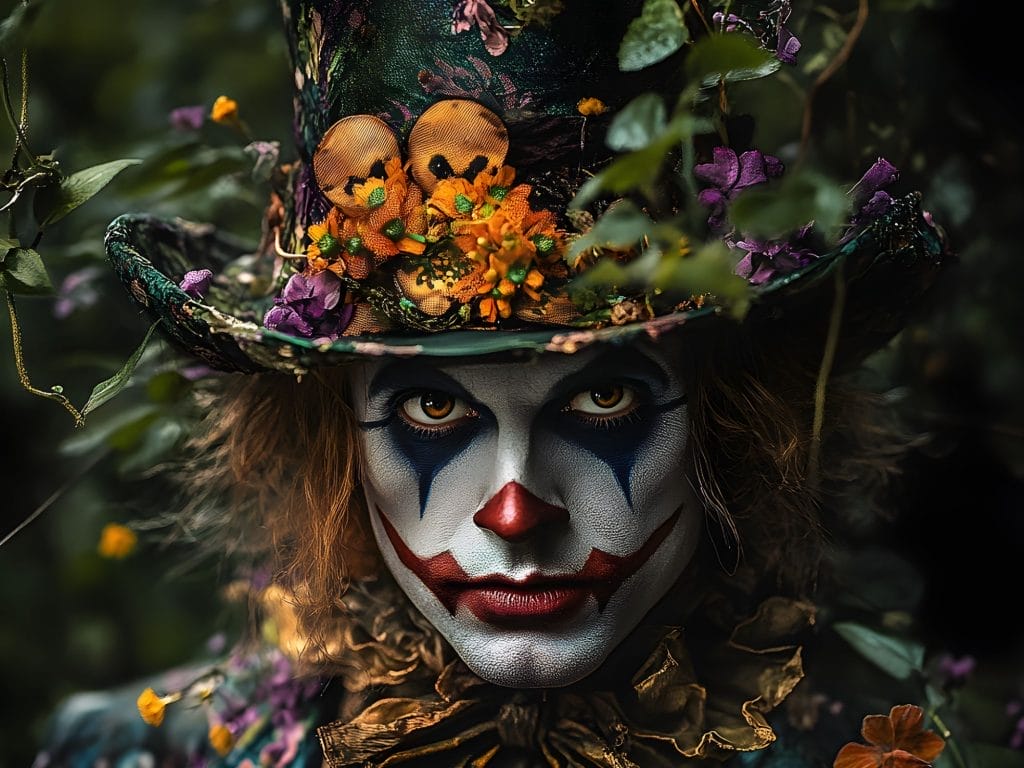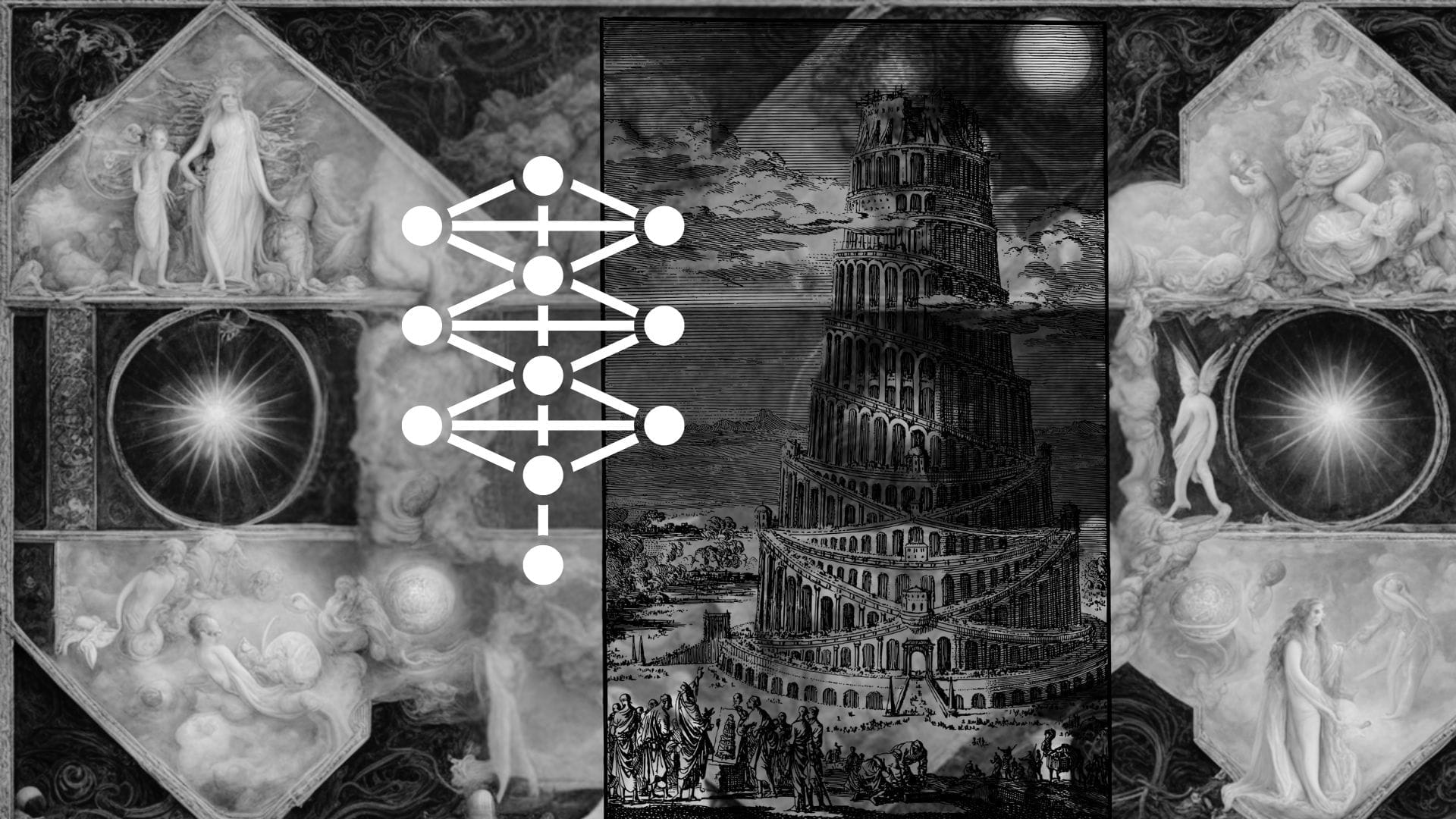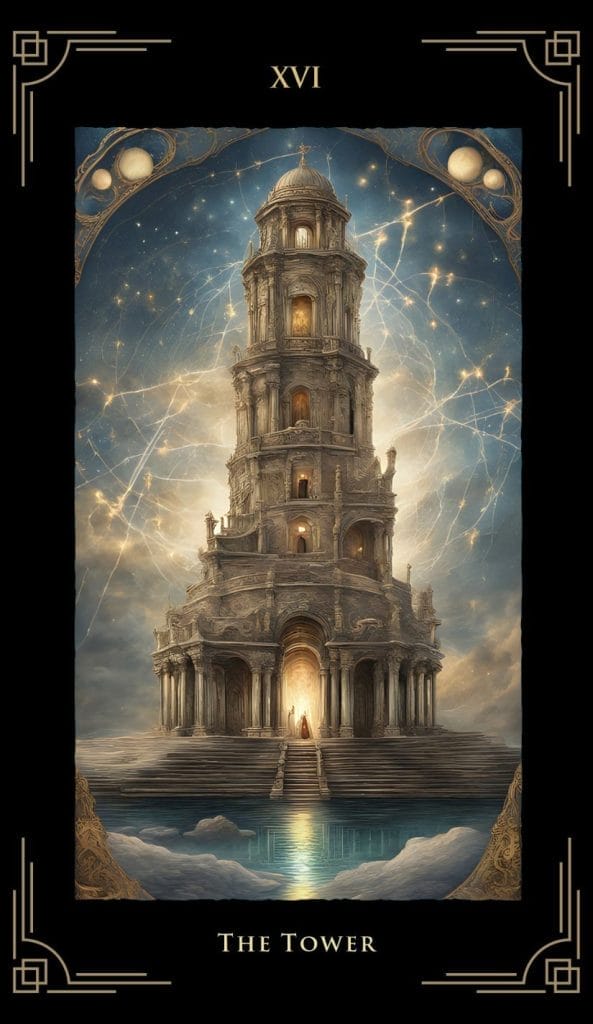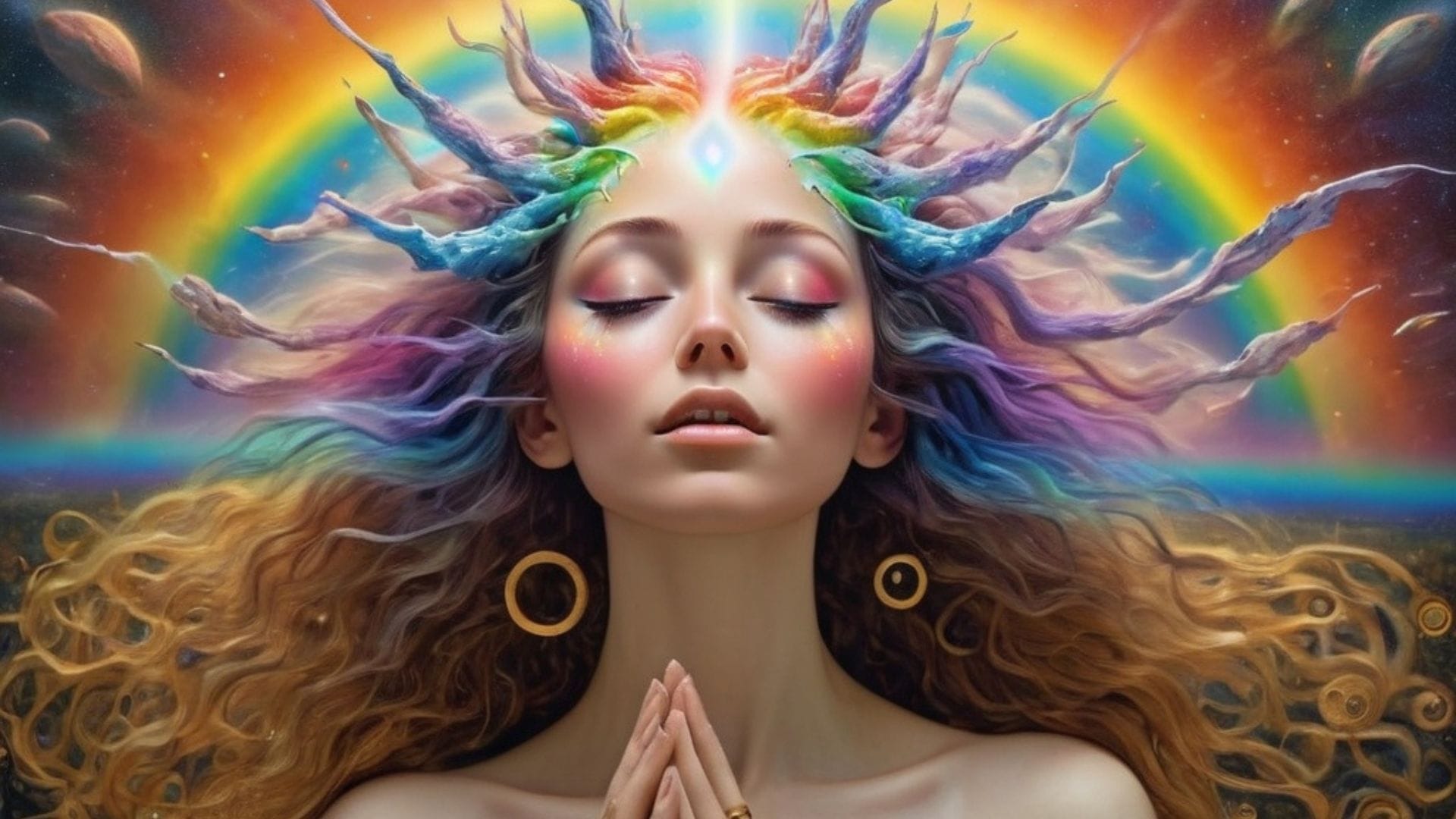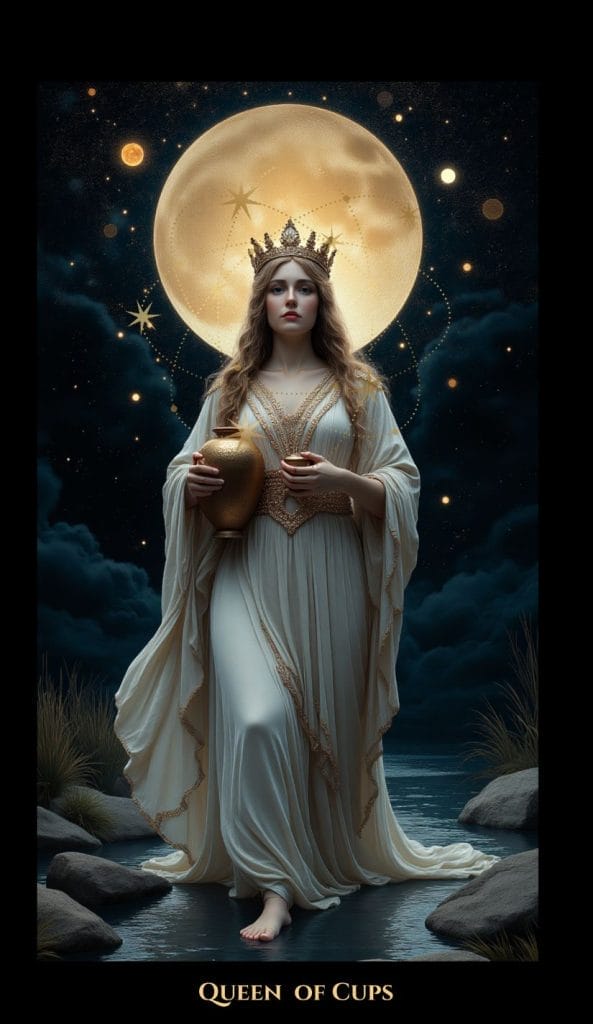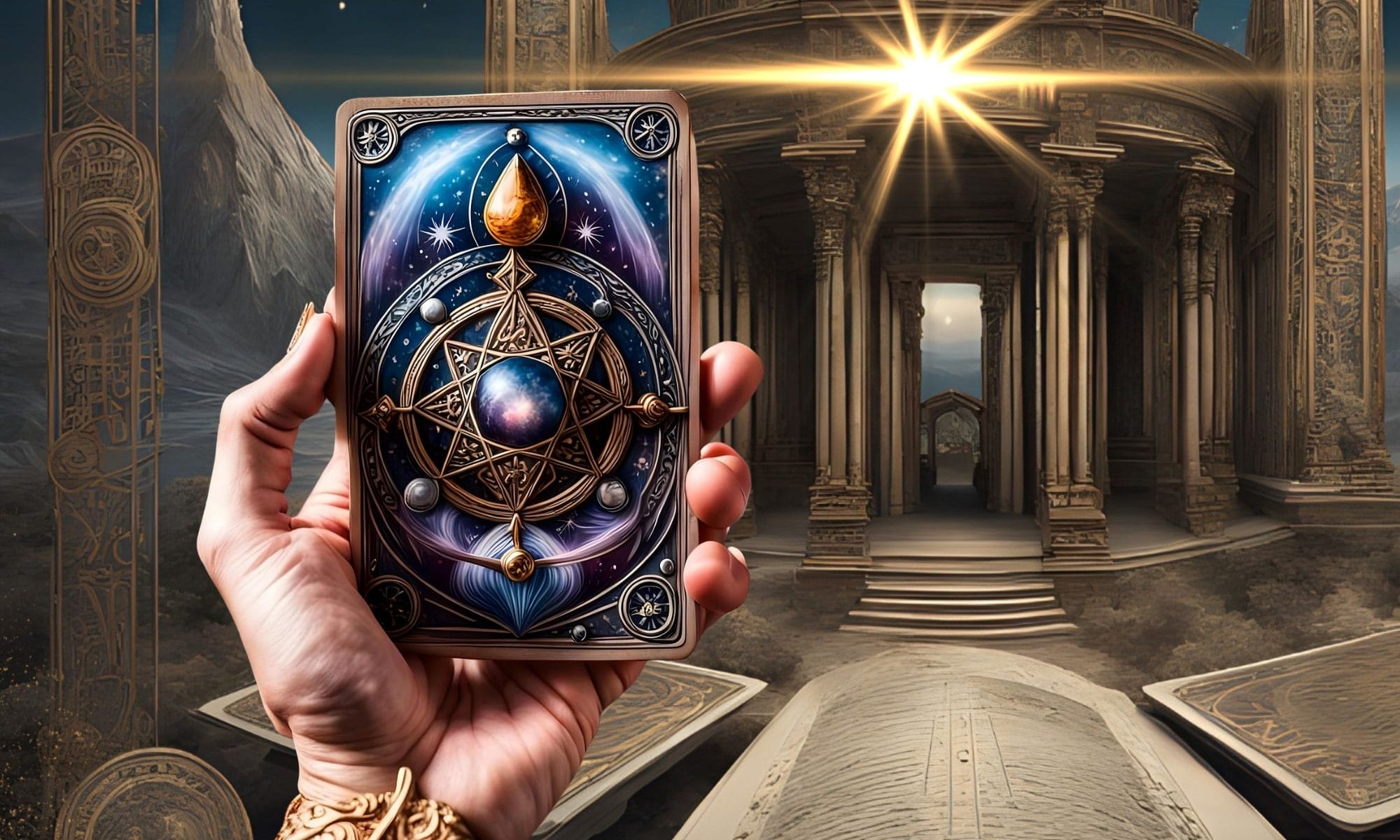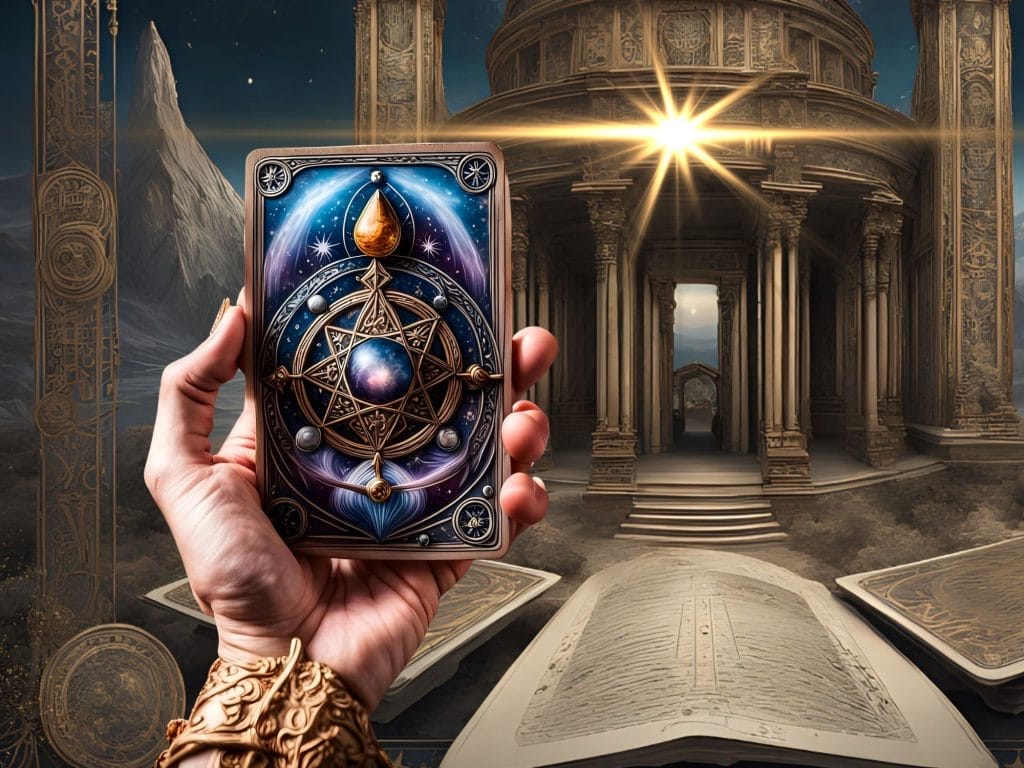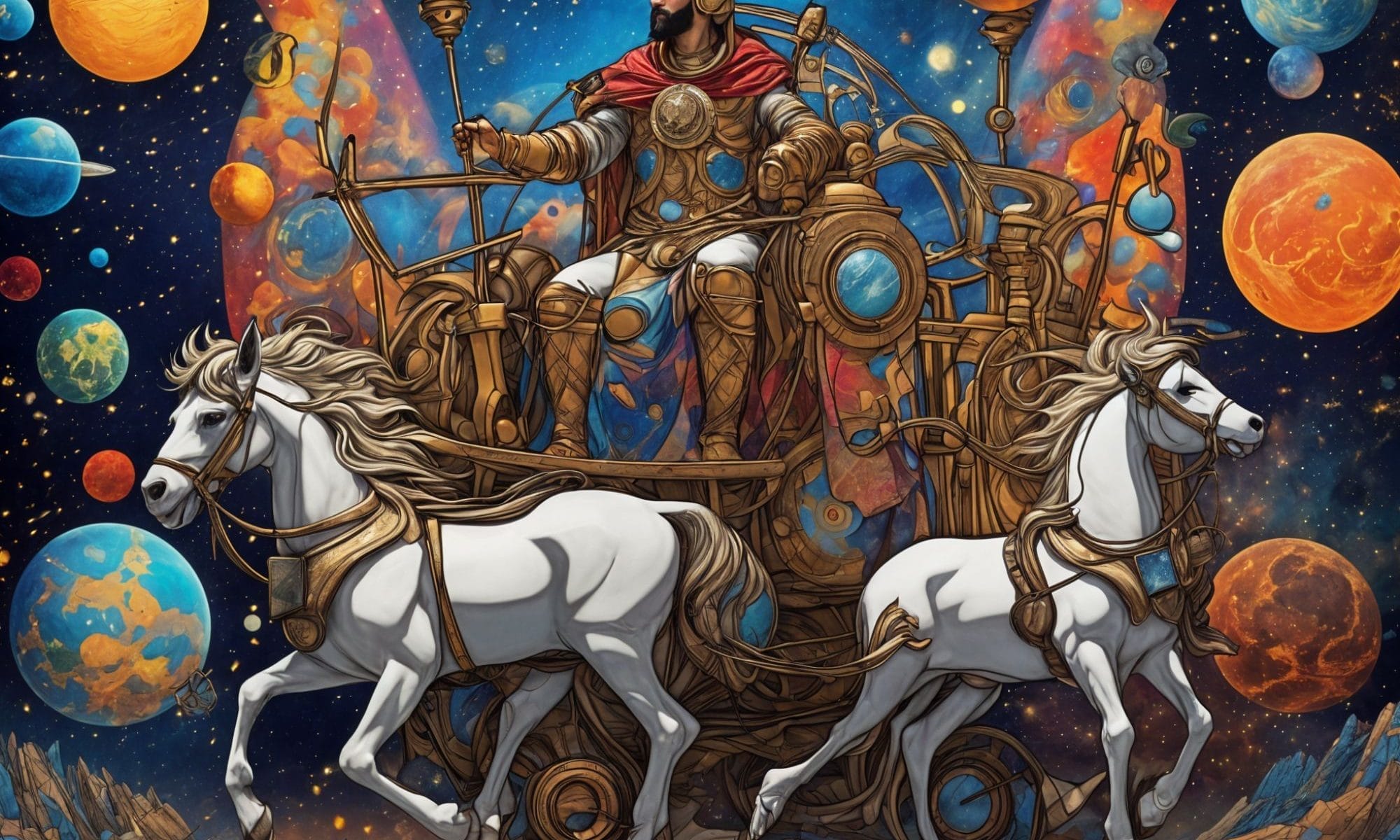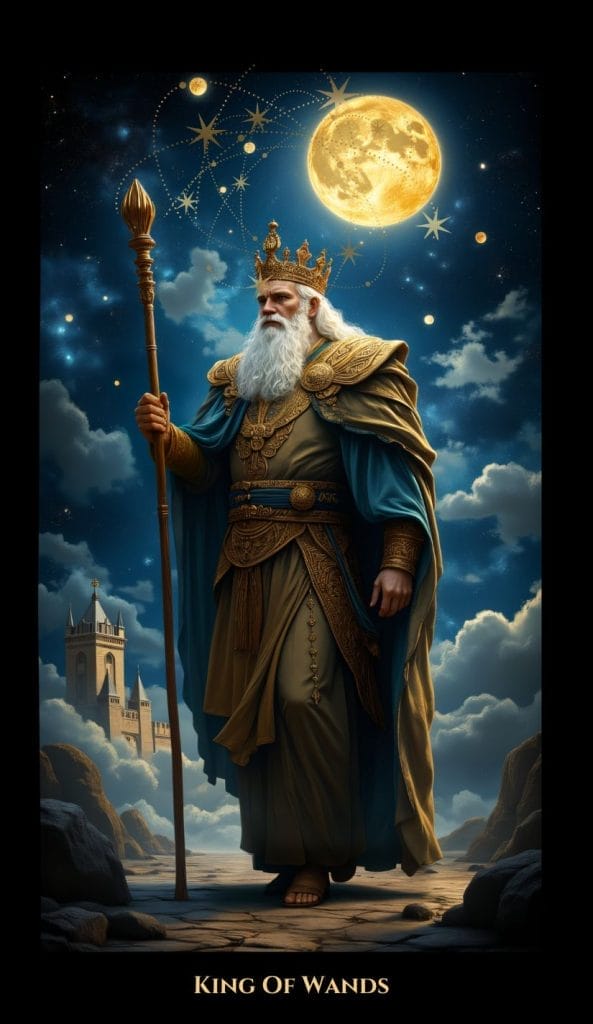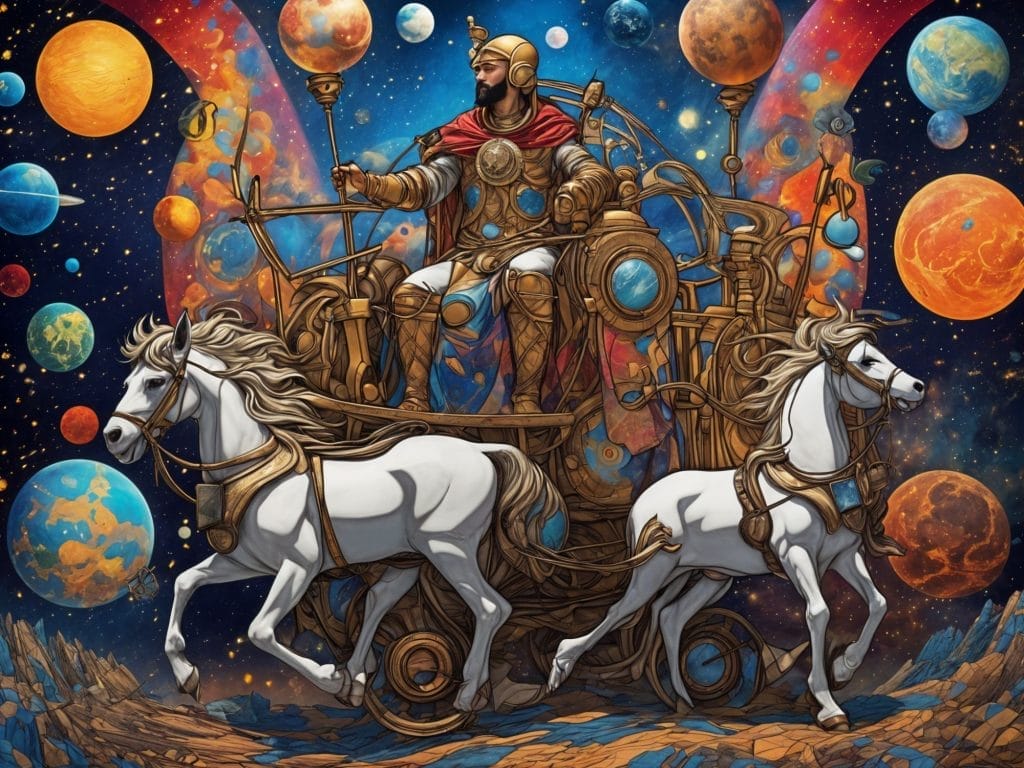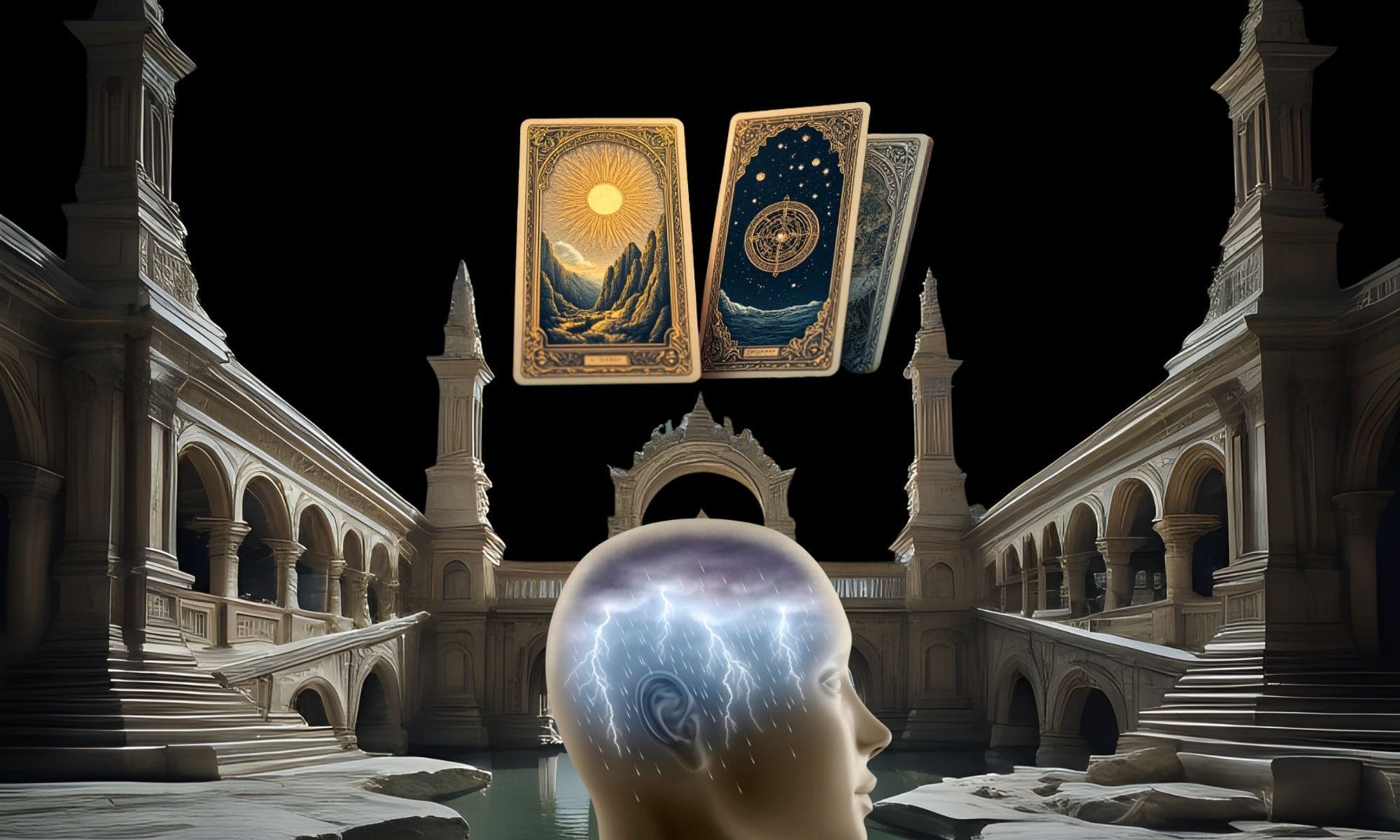Healing the shadow is a powerful step toward personal wholeness. This process involves welcoming the parts of yourself you were taught to hide. Using tarot archetypes for shadow work offers a gentle and visual way to understand your inner world. It turns your deck into a mirror for self-discovery.
The Heart of Shadow Work
- Your Shadow contains hidden feelings, talents, and desires you learned to suppress.
- The concept of Healing the Shadow appears across psychology, indigenous traditions, and modern spiritual paths.
- Strong judgments about others often point to your own unacknowledged Shadow aspects.
- Tarot archetypes provide a safe, symbolic mirror for exploring your unconscious.
- Shadow work is a gentle process of reclamation, not a race to fix yourself.
Estimated reading time:9 minutes

One does not become enlightened by imagining figures of light, but by making the darkness conscious.
~ Carl Jung
Understanding Your Hidden Self
Inside every person, there is light and there is Shadow. We like to show our bright side. We present the kind, wise, and spiritual parts of ourselves. The rest often gets pushed down. This includes anger, fear, and jealousy. It also holds quiet talents and desires that never had space to breathe. This hidden aspect is what Carl Jung called the Shadow.
It is not a monster. Your Shadow is not an evil part of you. It is simply everything in you that was not welcomed, seen, or safely expressed. To deny the Shadow is to deny your own wholeness. Jung believed we hide parts of ourselves to belong. We learn that certain feelings are too much. We learn that some impulses do not fit family or social rules.
Our desires might scare us. Even our gifts can make others uncomfortable. Maybe you learned it was wrong to be angry. So your anger went underground. Maybe your creativity was shamed. So, you locked it away. The child makes a simple decision. Only this part of me is allowed. The rest must stay in the dark. But what we hide does not disappear.
Your Shadow jumps out in sudden reactions. It appears in harsh judgments of others. Your Shadow can block intimacy and trust. It keeps showing up in our relationships. The Shadow is everything you are but could not be. Carl Jung said that until you make the unconscious conscious, it will direct your life. And you will call it fate. Until you heal the Shadow, the Shadow will quietly run the show until you turn toward it with awareness.
“Until you make the unconscious conscious, it will direct your life, and you will call it fate.”
~ Carl Jung
Healing the Shadow in World Traditions
The idea of Shadow is not only psychological. It is also spiritual and ancient. Many Indigenous traditions see the dark side as part of a natural balance. Healers and shamans work directly with it. They aim to restore strength and harmony to a person or community. In Wicca and modern witchcraft, facing one’s own Shadow is a key step to healing it. This path of self-knowledge leads to a deeper connection with Nature’s cycles. These paths do not tell you to cut off your dark side. Instead, they advise you to walk with it. They encourage you to listen to it and learn from it. This universal understanding shows that shadow work is a timeless human endeavor.
Seeing Your Shadow in Others
One of the easiest ways to notice your Shadow is through projection. This is when your Shadow uses other people as a mirror. Think about moments that feel familiar. Someone’s behavior irritates you far more than it should. You judge another person's trait very harshly. You feel a strong dislike without a clear reason.
Often, the qualities we attack in others are things we secretly have but do not accept. Or they are things we secretly want but do not allow ourselves. Here are some examples to consider. Constantly criticizing someone else’s anger may point to your own repressed anger. Judging someone for being too controlling can hide your own need to control everything.
Strong jealousy can reveal deep fears of not being enough. It can also point to a fear of not being loved. Feeling disgust toward someone’s sexual freedom often points to repressed desire or confusion inside yourself. This is not about blaming yourself. It is about gently asking one important question. What is this reaction trying to show me about me?
Projection is the Shadow knocking on your door. You can slam the door shut. Or you can open it a little and start to listen.
"Shadow work is the path of the heart warrior.""
~ Carl Jung
The Golden Gifts Within the Shadow
Many people think the Shadow is only trauma and bad stuff. That is not true. The Shadow also contains great value. It holds the part of you that learned to protect your inner child. It includes the thick skin you grew when you had to survive.
Your smart defenses, which you created to stay safe, live here too. It holds the voice that said, "Do not trust too easily; you have been hurt before." At one time, these inner protections were necessary. They helped you get through difficult experiences. Maybe they feel too heavy now. But their original purpose was to keep you safe.
The Shadow also hides your unused talents. It contains passions you never followed. It holds desires you were told were too much. Your spiritual gifts, which you were afraid to show, are here as well. To integrate the Shadow is to reclaim what you left behind. It is to stop living only half of who you are. Carl Jung called this path the work of a heart warrior.
Tarot Archetypes as Guides
This is where Tarot and other oracles come in. Oracles are not just tools for prediction. They are symbolic mirrors. When used with care, they can show us the very parts we hide from ourselves. This includes Tarot, Runes, Lenormand, or Gypsy Cards. All of these systems speak in the language of images and archetypes. They use patterns the unconscious understands. When you ask the cards about your Shadow, you are not asking what bad thing is wrong with me. You are asking what wants to be seen, healed, and welcomed now.
Starting a Conversation with Your Shadow
Tarot cards and Oracles act as bridges. They connect your conscious mind and your unconscious world. When you draw cards with this intention, you might ask specific questions. You could ask what your Shadow wants to show you right now.
You could ask what part of yourself you are refusing to see. Another good question is what old pattern is asking to be healed. The answer is not a punishment. It is a conversation starter. The symbol on the card wakes up thoughts and memories. It also brings up feelings.
By healing the Shadow, you begin to connect the dots in your life. You might see that you always act a certain way when you feel abandoned. You may understand that you judge a trait in others because you fear it in yourself. A card might remind you of something from your childhood. The card does not fix you.
It gives you a safe and guided image. This image helps you look within.
Key Tarot Cards for Shadow Work
Some Tarot cards naturally invite shadow work. They are not here to scare you. They are here to help you grow.
The Moon
The Moon brings up confusion and deep emotion. It shows things that move in the dark. It can reveal fears and illusions. The Moon also shows your projections. It asks you to honor your intuition. It also asks you to check where you may be fooling yourself. Sometimes we get lost in fantasy, and The Moon highlights this.
The Death
The Death rarely means literal death in Tarot. It speaks of endings and closures. It is about letting go of what no longer serves you. Death is the night before a new dawn. It is the compost where the old breaks down. This breakdown allows new life to grow.
The Devil
The Devil reveals inner prisons. These can be addictions or toxic patterns. It shows unhealthy attachments and fear of your own power. The Devil shows where you feel chained. It also reminds you that the chains may be looser than you think. This card does not blame you. It shows where you can choose differently.
These cards do not condemn you. They are honest mirrors. These cards show you where you are stuck. They also show you where your biggest transformation can begin.

Healing the Shadow - Beginning Your Integration Practice
Shadow work is not a race. It is not a checklist. It is a gentle and ongoing relationship with yourself. You might start with a few simple steps.
First, learn to observe with curiosity. Notice situations that trigger strong reactions. Ask yourself what this touch in you.
Second, drop the harsh judgment. Everyone feels anger and envy. Everyone feels fear and pride. This is part of being human.
Third, use oracles for reflection. Do not use them only for prediction. Instead of asking what will happen, try a different question. Ask what you need to understand about yourself right now.
Fourth, journal your insights. Write down dreams and card draws. Write about emotions and patterns you notice. Over time, a story begins to appear.
Fifth, allow yourself to feel. Integration comes from listening and accepting. It does not come from forcing yourself to be positive all the time.
Remember, healing the Shadow does not happen overnight. It is a path of many small steps. You will have many small aha moments. As you walk, you become more honest with yourself. You also become kinder to yourself.
Finding Support on Your Journey
You can begin Shadow work on your own. You can use journaling and meditation, and you can study and use Tarot and oracles consciously. But having support makes a big difference. A skilled Tarot or oracle consultant can provide important help. They can hold a safe space for you. An experienced Reader can help interpret the symbols with depth. They can walk beside you without judgment. There are times when it is wise to seek professional help. If you notice deep pain or trauma, a therapist is essential. If suffering keeps repeating, get clinical care. Oracles and self-knowledge are powerful allies. But they do not replace clinical care. Tarot and therapy can work together beautifully. Therapy supports your emotional and mental health. Oracles support your symbolic and spiritual understanding. Each has its role and its strength. Each has its time.
Your Path to Healing the Shadow Begins Now
The journey of healing the Shadow is a profound act of self-love. By engaging with Tarot archetypes, you gain a compassionate tool for shadow work. This process helps you reclaim lost parts of yourself and move toward genuine wholeness. It is a courageous path that leads to a more complete and authentic life.
About the Authors
Liane and Christopher Buck are the creators of the Tao of Tarot, whose first book and card set is The Hidden Arcana Tarot. They are also the founders of OMTimes Magazine, Humanity Healing Network, and the charities Humanity Healing International and Cathedral of the Soul. Read more on their Bio Page.
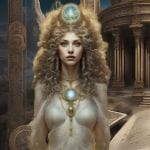
Facebook | YouTube | X | Instagram | TikTok | Medium | BlueSky | Pinterest



